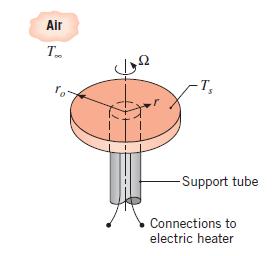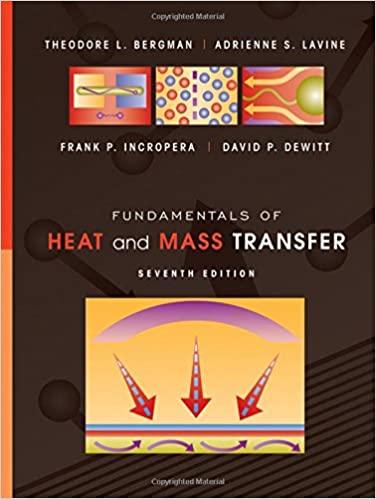Consider the rotating disk of Problem 6.16. A diskshaped, stationary plate is placed a short distance away
Question:
Consider the rotating disk of Problem 6.16. A diskshaped, stationary plate is placed a short distance away from the rotating disk, forming a gap of width g. The stationary plate and ambient air are at T∞ = 20 C. If the flow is laminar and the gap-to-radius ratio, G = g/ro, is small, the local radial Nusselt number distribution is of the form

where Rer = Ωr2 /v [Pelle J., and S. Harmand, Exp. Thermal Fluid Science, 31, 165, 2007]. Determine the value of the average Nusselt number, NuD = hD/k where D = 2ro. If the rotating disk temperature is Ts = 50°C, what is the total heat flux from the disk’s top surface for g = 1 mm, Ω = 150 rad/s? What is the total electric power requirement? What can you say about the nature of the flow between the disks?
Data From Problem 6.16
If laminar flow is induced at the surface of a disk due to rotation about its axis, the local convection coefficient is known to be a constant, h = C, independent of radius. Consider conditions for which a disk of radius ro = 100 mm is rotating in stagnant air at T∞ = 20°C and a value of C = 20 W/m2 · K is maintained.

If an embedded electric heater maintains a surface temperature of Ts = 50°C, what is the local heat flux at the top surface of the disk? What is the total electric power requirement? What can you say about the nature of boundary layer development on the disk?
Step by Step Answer:

Fundamentals Of Heat And Mass Transfer
ISBN: 9780470501979
7th Edition
Authors: Theodore L. Bergman, Adrienne S. Lavine, Frank P. Incropera, David P. DeWitt





